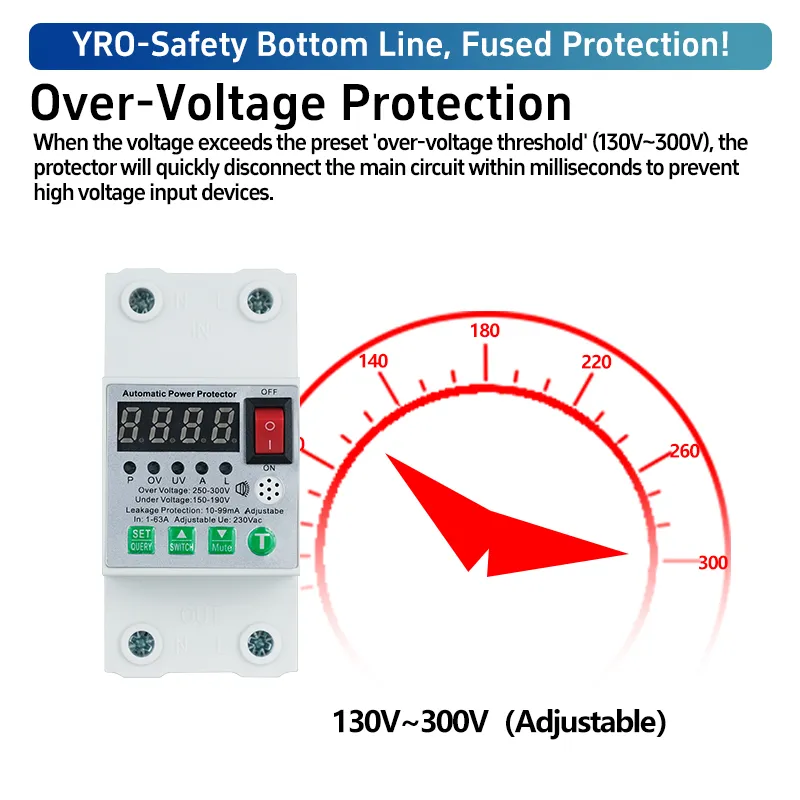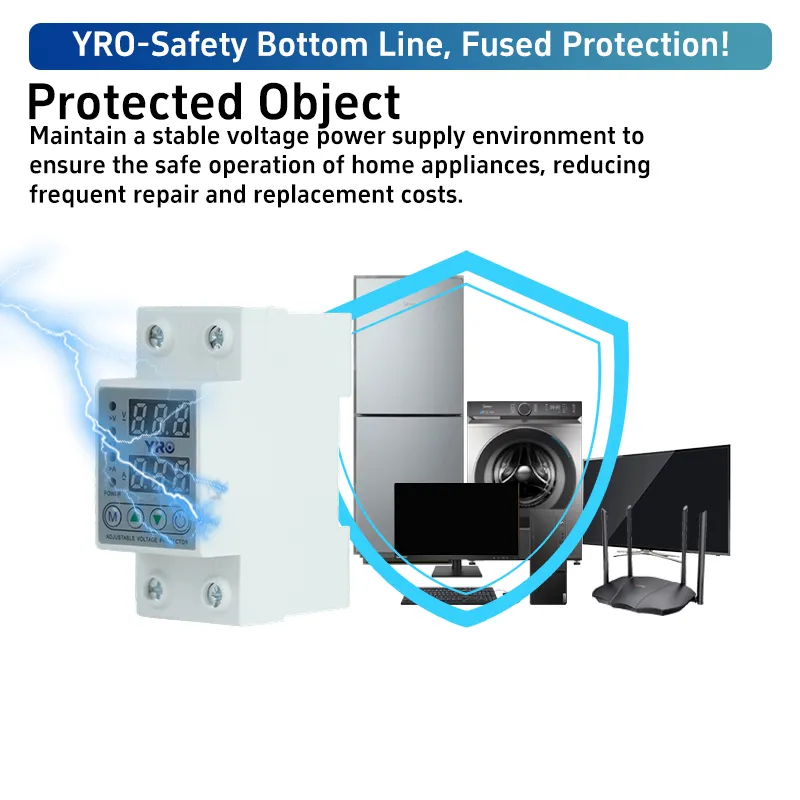What Situations Can Cause Frequent Tripping of Overvoltage and Undervoltage Protectors?
2025-11-08
In many electrical systems, overvoltage and undervoltage protectors help maintain the safe operation of equipment. If frequent tripping occurs, it usually indicates that there are problems with the power supply, lines or equipment that need to be inspected.
This article will list several common reasons for the frequent operation of overvoltage and undervoltage protectors, helping you initially determine the source of the problem, and introduce some feasible treatment methods to restore the normal operation of the system.
Power Supply Voltage Fluctuation or Instability
One of the most common reasons for tripping is the power supply voltage exceeding the set range. Whether the voltage is too high (overvoltage) or too low (undervoltage), the protector will actively disconnect the circuit to prevent equipment damage. Common causes of this situation include:
- Power supply line fault;
- Transformer abnormality;
- Voltage drop during peak electricity consumption periods.
Measure the incoming line voltage with a voltmeter. If the voltage fluctuation is large, a voltage stabilizer or surge protector can be installed before the incoming line.
Unreasonable Protector Setting Values
Even if the power supply is relatively stable, if the parameters of the protector are not set properly, it will still cause frequent tripping. Common incorrect Settings include:
- The overvoltage/undervoltage threshold is set too low (or too high);
- The delay time is too short, making the device overly sensitive to instantaneous fluctuations.
- The automatic reset interval is too short. The system is restarted before it has fully recovered.
According to the local voltage fluctuation range, appropriately increase the undervoltage threshold or decrease the overvoltage threshold. If the protector supports a delay function, a 30 s - 1 min delay can be enabled to prevent tripping caused by brief fluctuations.

High-Power Load Impact
Sometimes the power supply voltage appears normal when measured, but the protector still experiences frequent tripping. This situation is usually related to transient current impacts or brief voltage fluctuations caused by sudden load changes:
- When high-power appliances such as air conditioners and water heaters start, the instantaneous current is as high as 5-7 times the rated value, causing a transient voltage drop;
- Any inductive load with a coil will generate a transient high-voltage pulse at the moment of power-on or power-off.
The core of the solution is: reduce the impact of current shock on the grid voltage and improve the system's bearing capacity. We can distribute high-power equipment such as air conditioners and water heaters to different circuits, or stagger their starting times (using soft-start devices when necessary).
Line or Wiring Faults
Sometimes, the voltage at the power supply terminal is normal, but defects in the installation or wiring parts can cause voltage deviations locally, thereby triggering the protector. Common questions include:
- Loose terminal blocks, screws not tightened, aged or oxidized wires;
- The diameter of the line is too small, and the voltage drop is too large after the load is connected;
- In a multiphase system, load imbalance or neutral line sharing causes voltage drift in one phase;
- The insulation layer of the wire ages and gets damaged due to long service life, overheating or being bitten by animals. Such incomplete short circuits or leakage can disrupt the balance of the circuit and cause abnormal voltage fluctuations.
After turning off the power, retighten the terminal screws, clean the oxide layer, replace the aged wires, and check the circuits, joints or replace them with suitable wire specifications.
Equipment Aging or Component Performance Degradation
Even if the power supply and lines seem stable, tripping may also originate from the aging of other protective equipment or the degradation of component performance. For example:
- Transformer aging, voltage regulation performance declines, voltage fluctuations intensify when the load changes;
- The contact resistance of switching equipment such as circuit breakers and contactors increases, causing local voltage drops or heating;
- Components such as capacitors and surge protection modules age, and their response characteristics become abnormal.
This type of problem usually cannot be solved by adjusting parameters; it is necessary to inspect and replace related equipment or components to restore the system's healthy state.
Key Points and Final Recommendations
Frequent tripping of overvoltage and undervoltage protectors usually has specific reasons, which can range from simple wiring issues to complex electrical faults. Common situations include but are not limited to unstable power supply from the power grid, potential hazards in the lines, and the condition of the protectors themselves.
Before determining whether the protector is faulty, it is recommended to start troubleshooting from simple possibilities first. You can pay attention to the specific conditions under which the circuit breaker trips, such as whether it occurs at a fixed time, whether it is related to the use of certain electrical appliances, or occurs in specific weather conditions. These observations are helpful for the initial analysis of the source of the problem.
If the tripping situation persists, you can ask a professional electrician to check it. They can help identify the cause through voltage monitoring and system testing. Frequent tripping, although it may cause inconvenience, also indicates that the protector is working properly. The ideal state is to enable it to respond promptly to voltage fluctuations that are indeed risky, without malfunctioning due to normal fluctuations.
Effective handling of tripping issues can not only reduce the trouble in daily use but also ensure that the protector can function normally when an abnormal voltage actually occurs, guaranteeing the safe use of electrical equipment.





